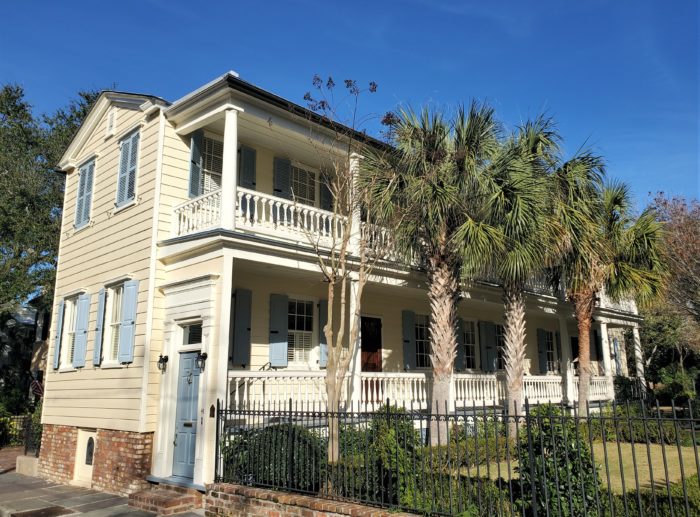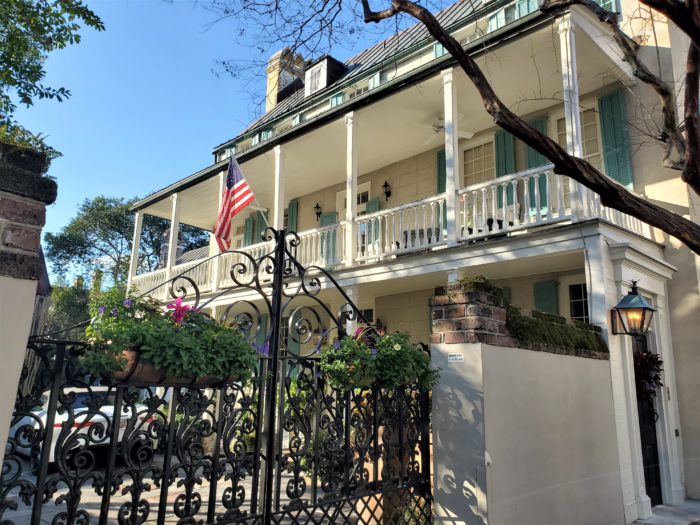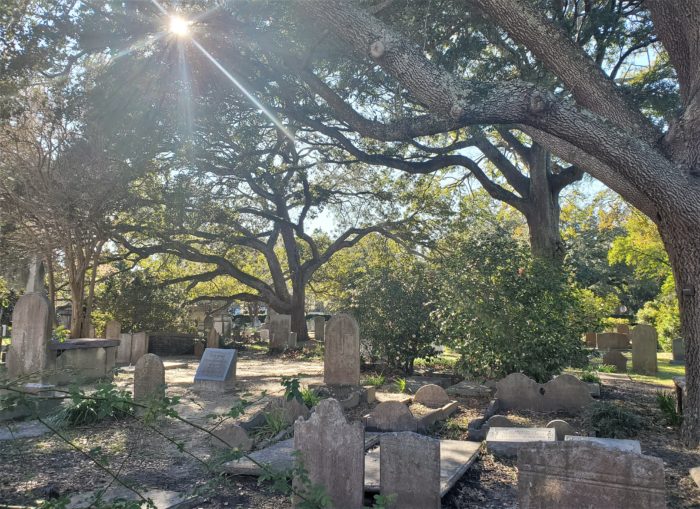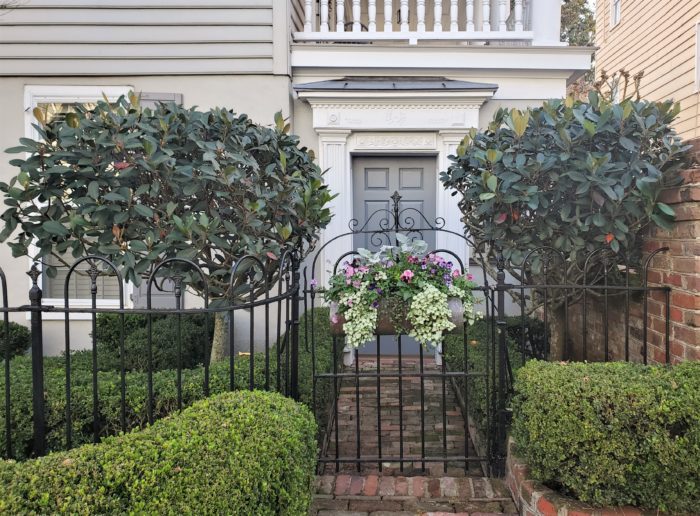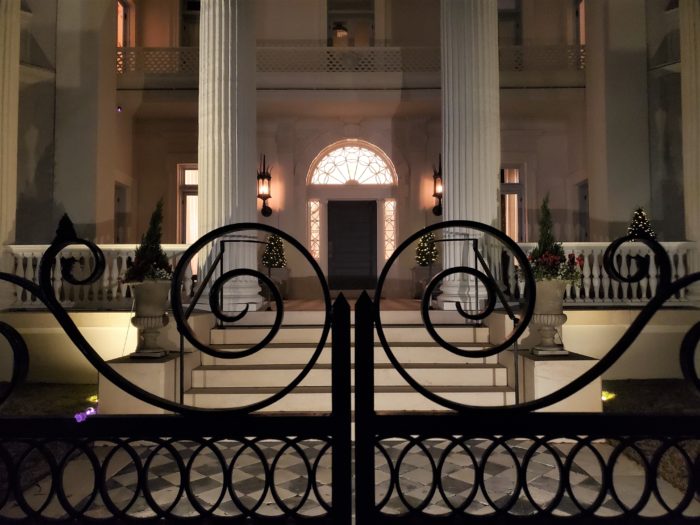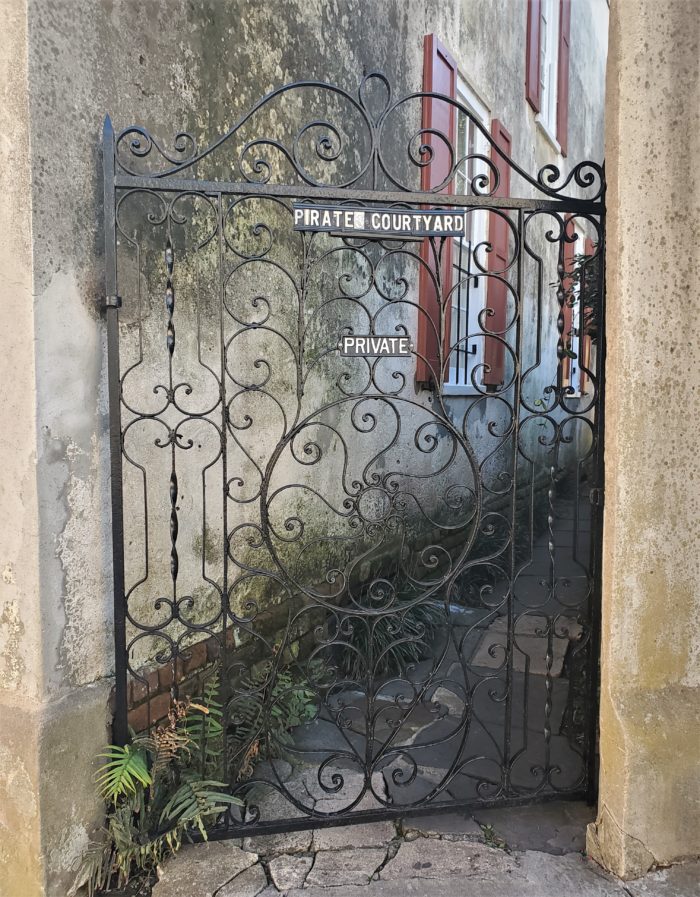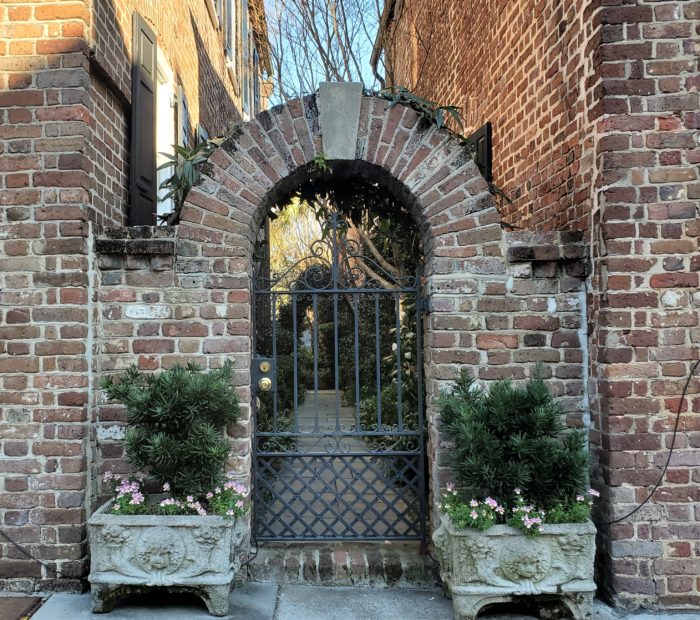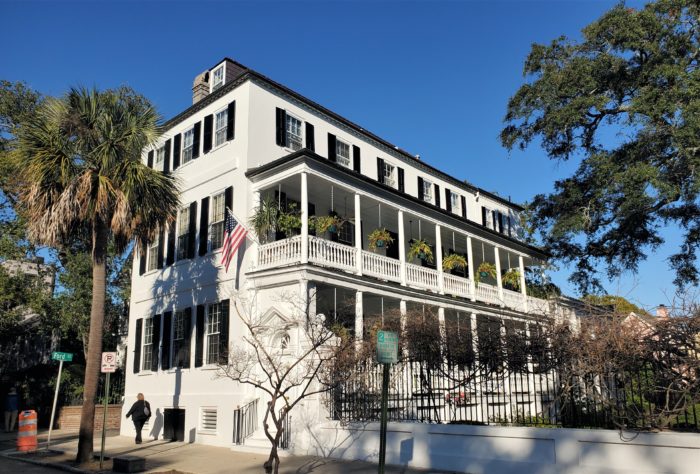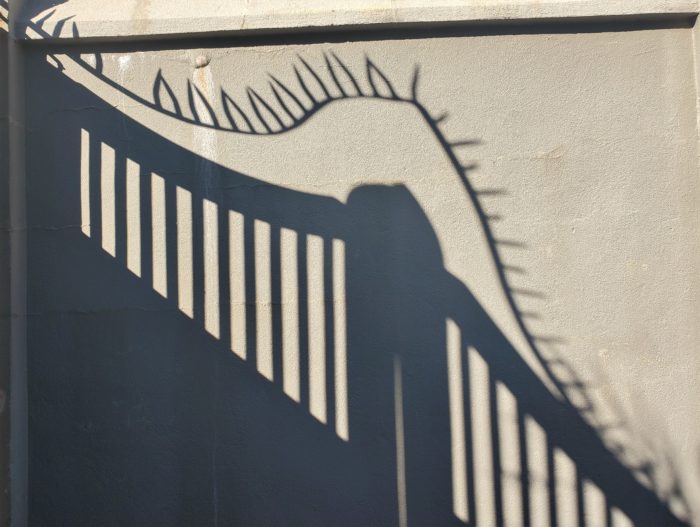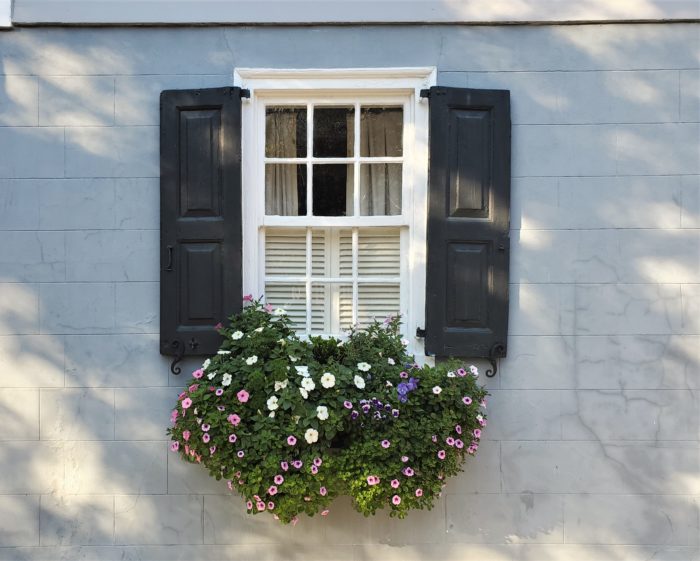Built in 1865 on Legare Street, this house is a great example of a Charleston single house. The main entrance is in the middle of the porch. The blue door facing the street is a “hospitality door” — which when left open indicated that the resident was receiving guests. If it was closed, you should get the message.
King Street Beauty
Built before 1739, the William Elliot House on King Street is one of Charleston’s oldest single houses. Included in its interesting history is that in 1763 it served as a boarding school for young ladies. Now a private home, its beautiful gates always host some pretty flower boxes.
Graveyard
The graveyard at the Circular Congregational Church is beautiful and historic. Seen here from Church Street, it’s believed to be the oldest English burial ground in Charleston — with graves dating back to 1695.
Hobbit Door
This little door on Lamboll Street always reminds me of an entrance to a hobbit’s house.
Villa Magherita
The Villa Magherita on South Battery is one of the most recognizable Charleston houses. Fronting White Point Garden, it became a desirable hotel in the early 1900’s. Owned by Daisy Simonds, she named it after herself — as “Magherita” is Italian for daisy.
Pirates
The houses surrounding “Pirates Courtyard” on Church Street were built in the early 1740’s and are believed to have been where many pirates, including Blackbeard, hung out while they were in Charleston. To make it a less stressful experience, it is said that there was an escape tunnel that ran from under the house to the harbor — just in case that had some unwanted visitors.
Connecting Colonial
This pretty arch connects two colonial era (c.1742) houses on King Street in the Charlestowne (South of Broad) neighborhood.
Ford House
The Timothy Ford House on Meeting Street, built 1800-06, is a wonderful example of a very large Charleston single house. In 1824, the Fords entertained the Marquis de Lafayette, the Revolutionary War hero, there on his visit back to the US.
Shadows
With all the interesting architecture in Charleston, there are many beautiful shadows cast. The gate and protective ironwork casting this shadow are on Orange Street — guarding the entrance to the back drive of the grand Col. John Stuart House (c. 1767-72).
Window Boxes
With the positioning of many Charleston houses right up to the sidewalk (particularly, the sideways facing Charleston single houses), window boxes often replace having a front yard — and they are generally treated with the same loving care.
- « Previous Page
- 1
- …
- 45
- 46
- 47
- 48
- 49
- …
- 188
- Next Page »
